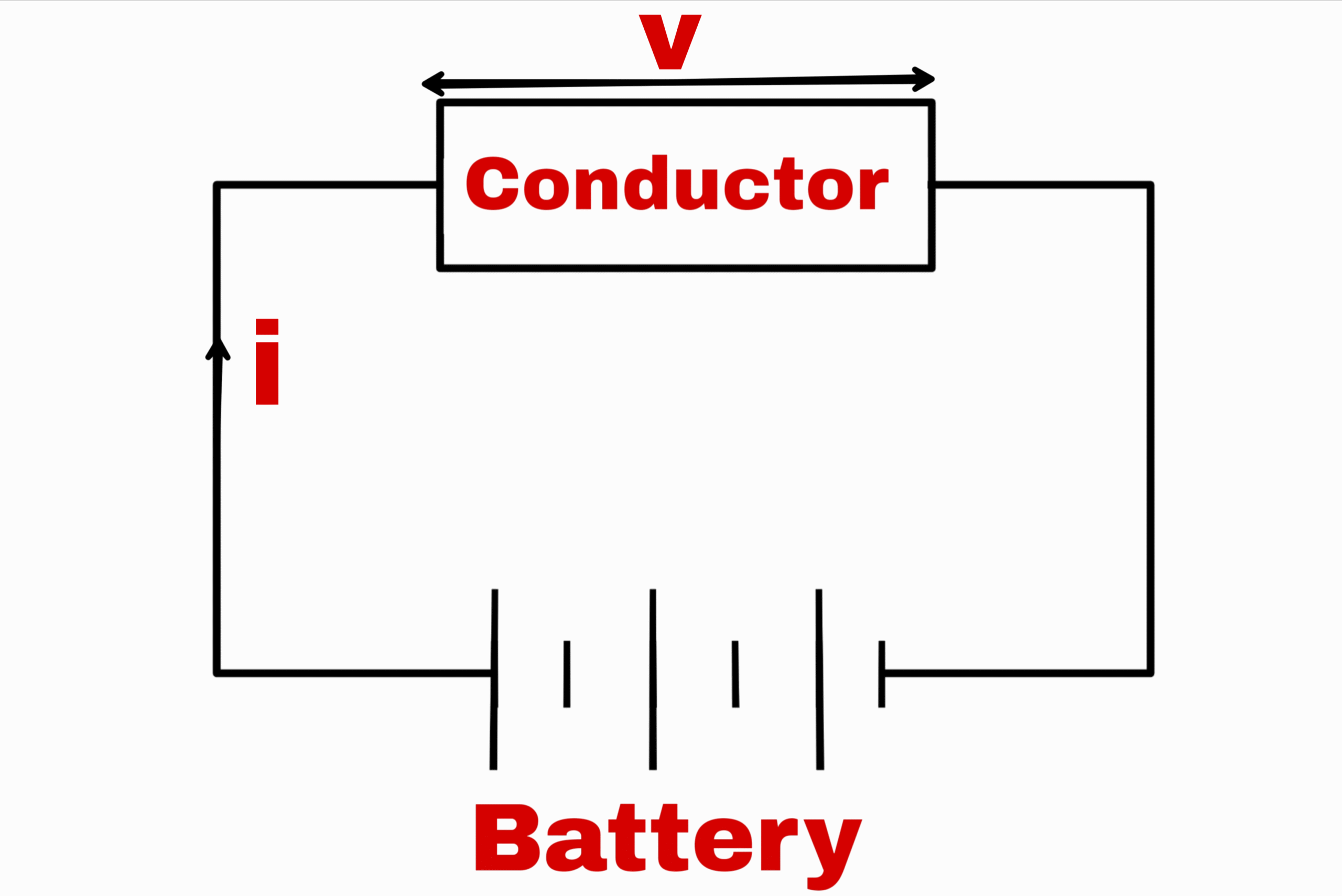Ohm’s law
According to this law,
If there is no change in the physical state of a conductor, then the ratio of the electric potential difference applied at its ends and the electric current flowing through them is constant.
If electric potential difference applied across the ends of a conductor was V and the current flowing through it was i.
Then,
By Ohm’s law,
V/i = Constant
Ratio of V and i is the resistance.
V/i = R
When a graph is plotted b/w V and i, a straight line is obtained.
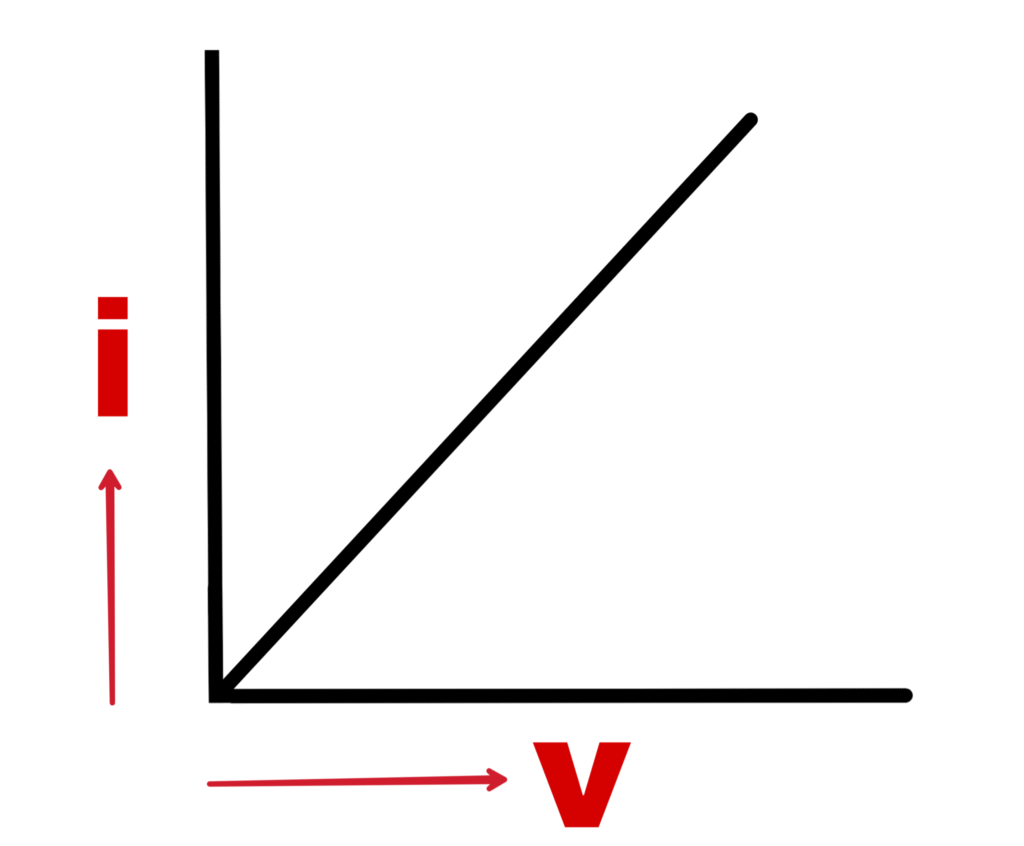
Ohm’s law is true only for conductors. Those substances which do not obey Ohm’s law are called a conductors.
Ohmic and Anohmic Circuits
The circuits which obey Ohm’s law are called Ohmic circuits. For such circuits, the graph drawn b/w V and i is a straight line.
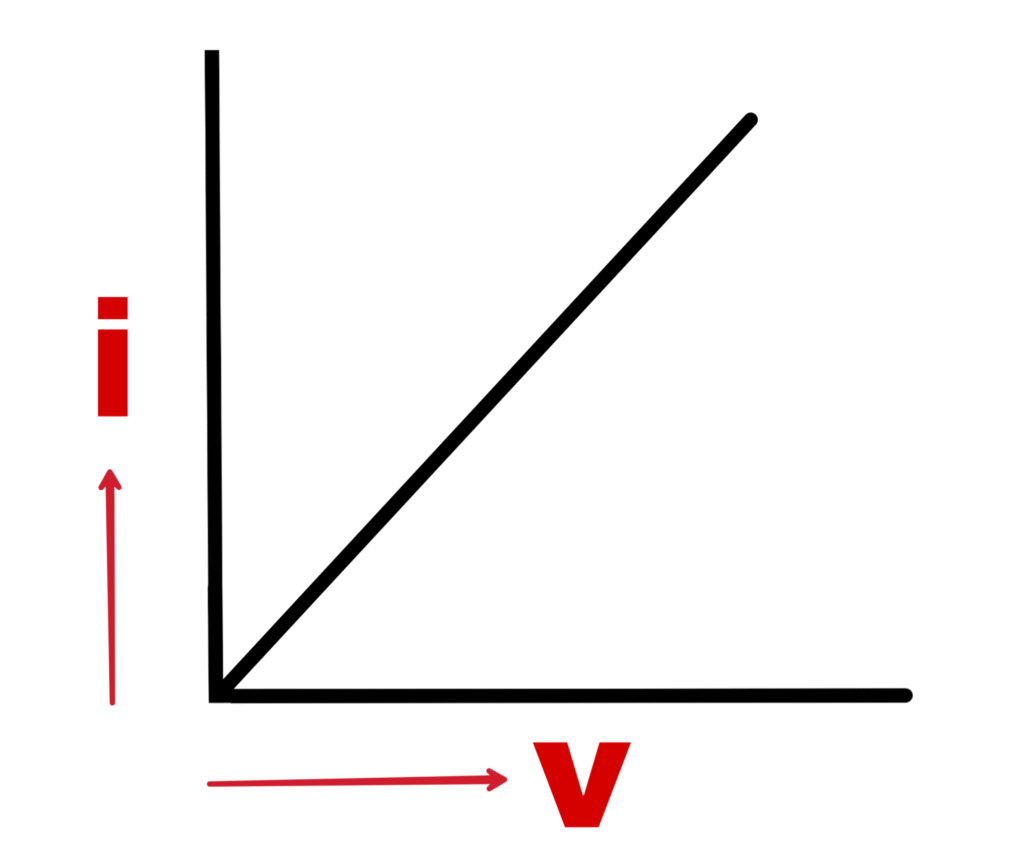
The circuits which do not obey Ohm’s law are called Anohmic circuits. For such circuits, the graph drawn b/w V and i is not a straight line.
That is,
V/i is not constant.
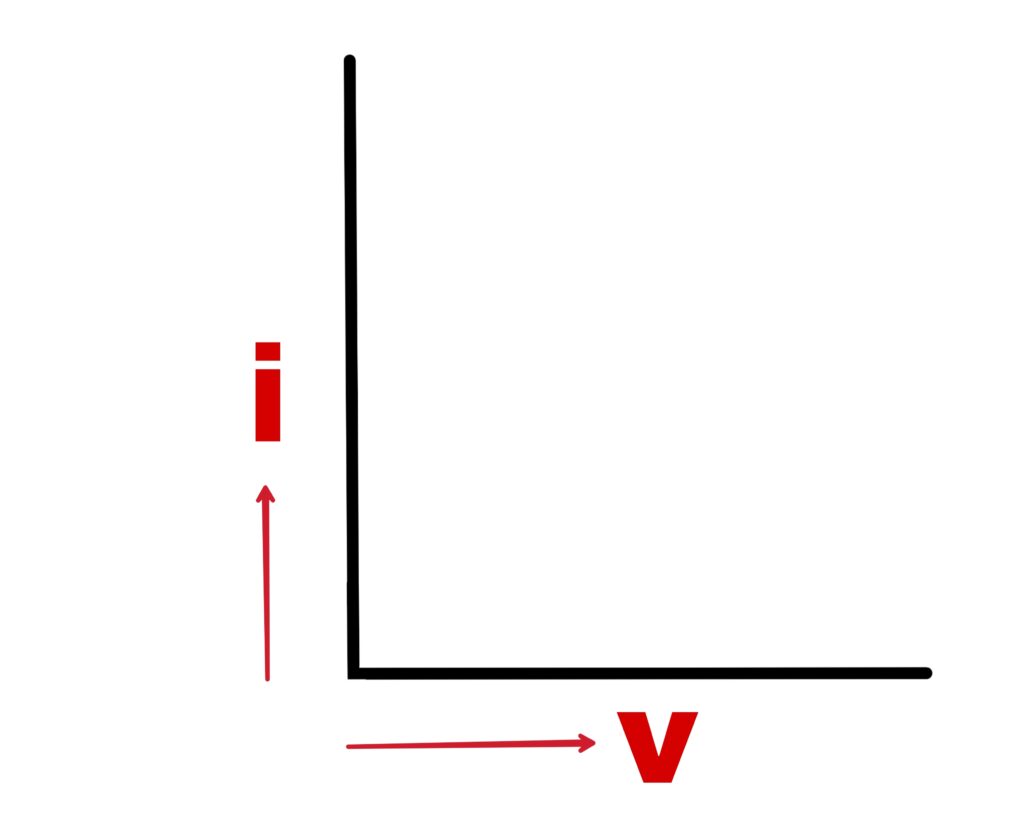
The mixture of metals does not obey Ohm’s law. For such circuits, dynamic resistance is used.
Dynamic resistance
For an ohmic circuit, ratio of the change in potential difference ∆V to the change in current relative to it ∆i is called the dynamic resistance.
Dynamic resistance = ∆V/∆e
Explanation of Ohm’s law on the basis of drift velocity
Suppose the length of metal wire is l and area is A. When a potential difference V is established between its ends, then electric current i starts flowing in it.
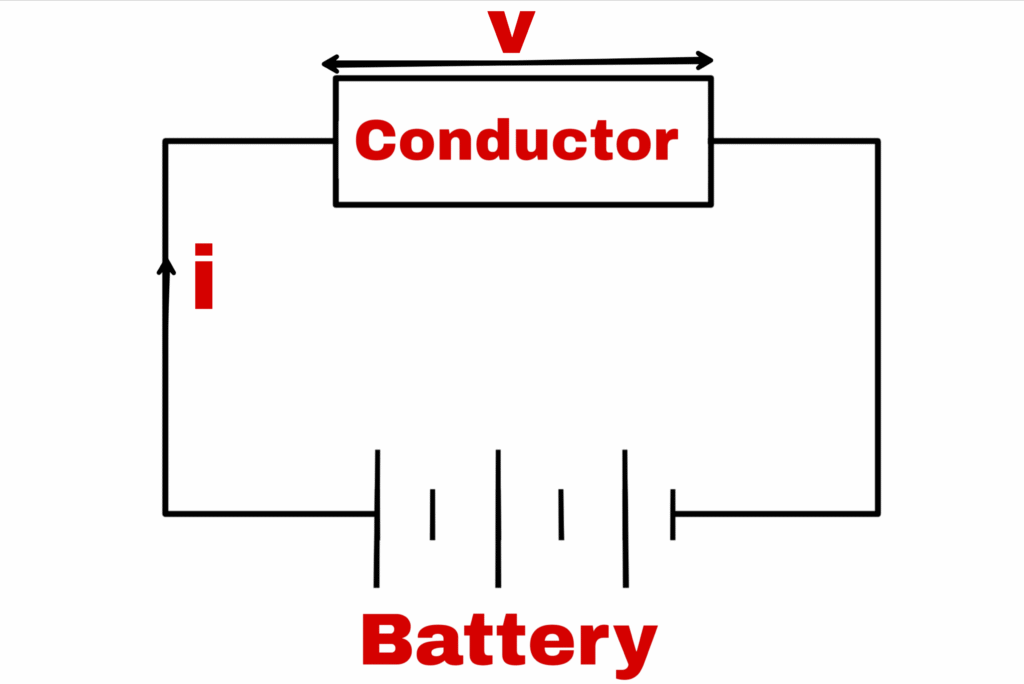
If the number of free electrons in unit volume of the wire is n and drift velocity of the electron is vd,
Then
i = n.e.A.vd ——(1)
Where e is the charge of electrons.
Since the length of a conductor is l and the potential difference b/w the ends is V.
Hence,
Electric field at each point of the wire
E = V/l
Force exerted on each free electron by this electric field
F = e.E
F = e.V/l
If the mass of the electron is m, then the acceleration produced in the electron due to this force is,
m.a = e.V/l
a = e.V/m.l —–(2)
Since the main electrons inside the conductor repeatedly collide with the metal cations, if there is a time interval between two successive rotations of an electron with the cations,
Then,
The time interval b/w the rotations of the electron = a.τ
If the thermal velocity of an electron is u₁ at any moment in the absence of an electric field, then in the presence of same electric field its velocity will increase to u₁+aτ₁.
Where,
τ₁ = The time interval of two successive collisions of electron.
Similarly,
The velocity of other electron is
u₂+aτ₂, u₃+aτ₃———–
Therefore,
Average velocity of all n electrons will be the tracking velocity of electrons.
Vd = ( u₁+aτ₁ )+( u₂+aτ₂ )+(u₃+aτ₃)—-
Vd = (u₁+u₂+u₃—–uₙ)/n+a(τ₁+τ₂+τ₃—–τₙ)/n
Vd = aτ ——(3)
Where,
τ = (τ₁+τ₂+τ₃—–τₙ)/n is the average time interval between two consecutive collisions of electrons.
Putting the value of a from equation (2) in equation (3)
Vd = (ev/ml).τ
Putting the value of Vd in equation (1)
i = n.e.A.vd
i = n.e.A.(ev/ml).τ
i = (n.e².A.τ/ml).V
i = [(n.e.²τ)/m].[A/l].V
i/V = (n.e.²τ)/m].[A/l]
V/i = m/(n.e.²τ).(l/A)
m/(n.e.²τ).(l/A) is a constant for a given conductor at a certain temperature. It is called the electrical resistance of the conductor.
Hence,
V/i = R Constant
This is Ohm’s law

